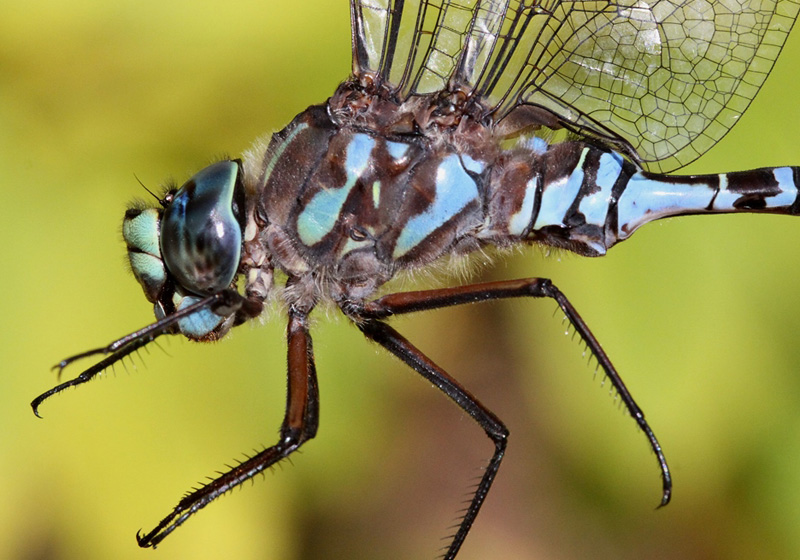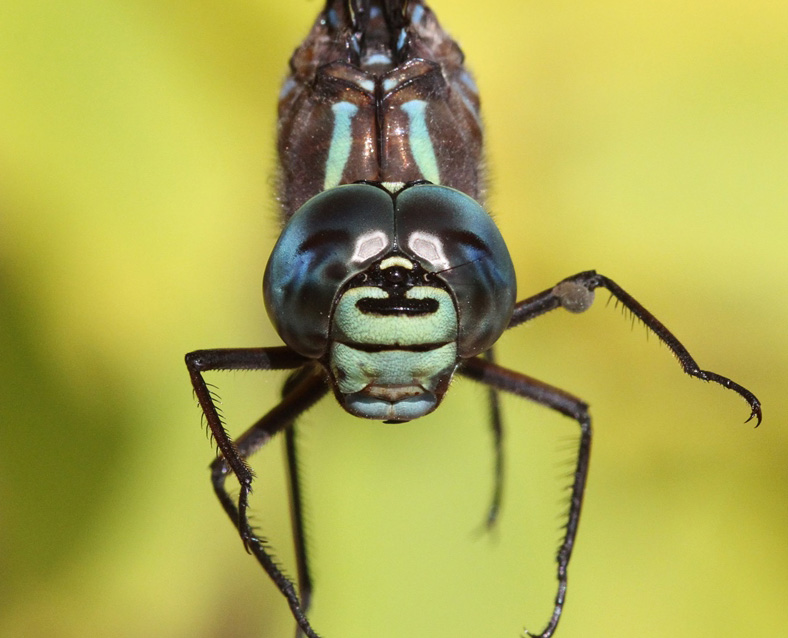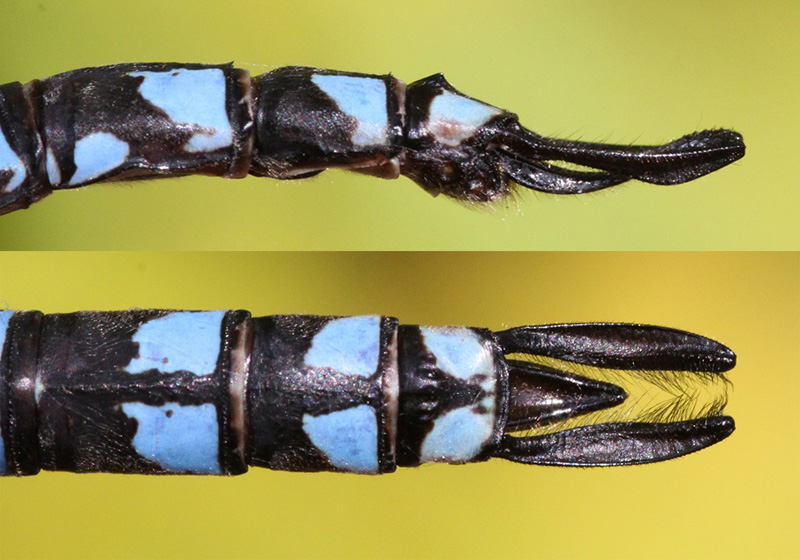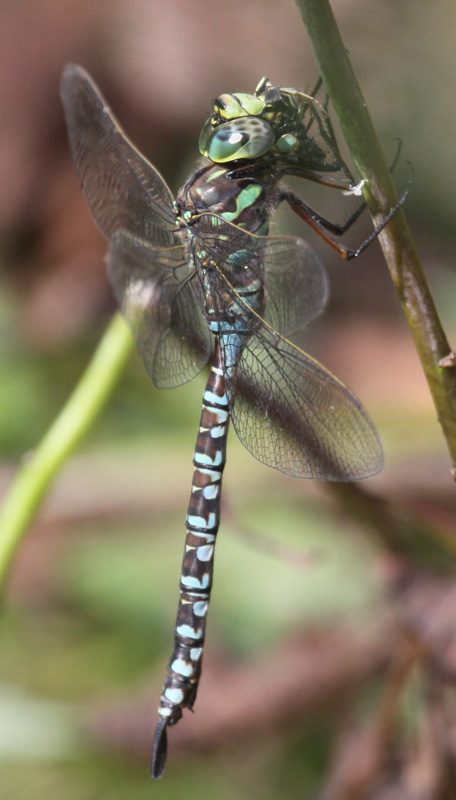




Aeshnidae, Darner Family
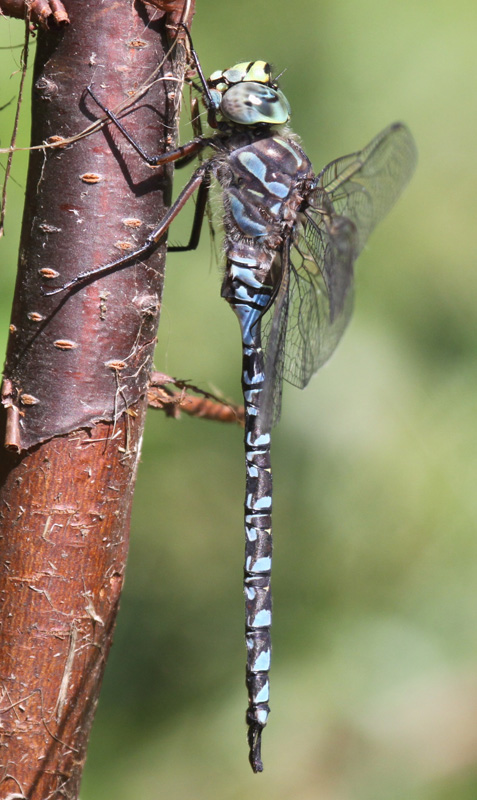
The mosaic darners of the genus Aeshna (aka blue darners) are large, strong-flying dragonflies with late-season flight periods. Most are similar to each other in size and general coloration, so in-hand examination is usually necessary to identify them. The most important distinguishing characteristics for this genus are the shapes and colors of the pale stripes on the sides of the thorax, especially the first or anterior stripes (here referred to as anterior thoracic side stripes [ATSS]), and the shapes of the cerci (upper pair of claspers) at the tip of the abdomen (whether paddle type or wedge type). Other marks that are often helpful include the presence/absence of a black line across the face, and the sizes of the pale spots on top of the abdominal segments (S), including the presence/absence of a spot on S10. Refer to the images of Aeshna species on the species pages of this website to compare shapes of thoracic side stripes and consult any dragonfly field guide for illustrations of the claspers (some guides are listed in the Resources Section).
Status-Global/State:
Distinguishing Characteristics:
This is the largest mosaic darner in Wisconsin. Both genders are similar to Canada and green-striped darners in having deeply indented (notched) anterior thoracic side stripes, however, the lake darner has those stripes even more deeply notched (pinched), and the rearward extending "flag" at the top of the ATSS is separated to a dot. Further, it is distinguished from similar species by a heavy black line across the face, posterior thoracic side stripes with a distinct notch on the front edge, and larger size. Males have paddle-type cerci.
Description of Habitat/Range:
Common throughout Canada and northern United States, this species is fairly common in northern Wisconsin. Preferred habitat is lakes, larger ponds, and sometimes slow streams, usually in forested landscapes.
Flight Season:
Late July to early October, one of Wisconsin's latest darners. Flies over open water and along lakeshores more, and hovers less than other darners.
(Click on photos to enlarge)
